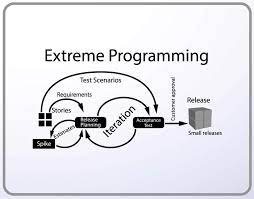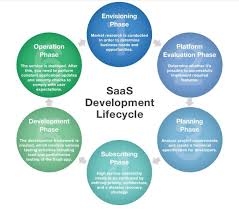Empowering Finance: The Evolution of Fintech Software Development
The Rise of Fintech Software Development
In recent years, the financial technology (fintech) industry has experienced significant growth, revolutionizing the way we manage and interact with our finances. At the heart of this transformation is fintech software development, which plays a crucial role in creating innovative solutions that enhance financial services.
Fintech software development involves the creation and implementation of software applications that cater to various aspects of the financial sector, including banking, investment management, insurance, and more. These applications leverage cutting-edge technologies such as artificial intelligence, blockchain, and machine learning to streamline processes, improve efficiency, and enhance user experience.
One of the key drivers behind the rise of fintech software development is the increasing demand for digital financial services. Consumers today expect convenient and secure ways to manage their money online, prompting traditional financial institutions to adopt fintech solutions to stay competitive in the market.
Furthermore, fintech software development has democratized access to financial services by making them more accessible to underserved populations. Through mobile banking apps, peer-to-peer lending platforms, robo-advisors, and other fintech innovations, individuals and businesses can now access a wide range of financial products and services with ease.
From a developer’s perspective, fintech software development presents unique challenges and opportunities. Developers working in this field must have a deep understanding of finance regulations, security protocols, and data privacy requirements to ensure compliance with industry standards.
Despite these challenges, fintech software development continues to thrive as developers push boundaries and explore new frontiers in financial technology. With ongoing advancements in areas such as real-time payments, decentralized finance (DeFi), and digital currencies like Bitcoin and Ethereum, the future of fintech software development looks promising.
In conclusion, fintech software development is reshaping the financial landscape by driving innovation, improving accessibility, and empowering users with powerful tools to manage their finances effectively. As technology continues to evolve at a rapid pace, we can expect fintech software developers to play a pivotal role in shaping the future of finance.
Exploring Key Questions in Fintech Software Development: Benefits, Technologies, and Future Trends
- What is fintech software development?
- How does fintech software development benefit the financial industry?
- What technologies are commonly used in fintech software development?
- What are the challenges faced by developers in fintech software development?
- How does fintech software development impact traditional banking services?
- Is cybersecurity a major concern in fintech software development?
- What are some popular examples of fintech applications developed recently?
- How can businesses leverage fintech software development to improve their operations?
- What trends are shaping the future of fintech software development?
What is fintech software development?
Fintech software development refers to the process of creating and implementing software applications tailored to meet the specific needs of the financial technology (fintech) industry. This specialized form of software development focuses on designing innovative solutions that enhance financial services, such as banking, investment management, insurance, and more. By leveraging advanced technologies like artificial intelligence, blockchain, and machine learning, fintech software developers aim to streamline processes, improve efficiency, and deliver a seamless user experience in the ever-evolving landscape of digital finance.
How does fintech software development benefit the financial industry?
Fintech software development offers a multitude of benefits to the financial industry by introducing innovative solutions that enhance efficiency, accessibility, and security. These technologies streamline traditional financial processes, such as payments, lending, and wealth management, making them faster and more cost-effective. Additionally, fintech software development enables financial institutions to reach a broader audience by providing digital services that cater to the needs of tech-savvy consumers. By leveraging advanced technologies like artificial intelligence and blockchain, fintech software development also improves data accuracy, reduces fraud risks, and enhances overall customer experience in the financial sector.
What technologies are commonly used in fintech software development?
In fintech software development, a variety of technologies are commonly utilized to create innovative solutions that enhance financial services. Some of the key technologies frequently employed include blockchain for secure and transparent transactions, artificial intelligence and machine learning for data analysis and personalized recommendations, cloud computing for scalability and flexibility, API integration for seamless connectivity with third-party services, and cybersecurity measures to ensure the protection of sensitive financial data. These technologies work together to drive efficiency, improve user experience, and meet the evolving needs of the fintech industry.
What are the challenges faced by developers in fintech software development?
Developers in fintech software development encounter various challenges that require specialized knowledge and expertise. One key challenge is navigating the complex regulatory environment governing the financial industry, as developers must ensure that their software complies with stringent data security and privacy regulations. Additionally, staying abreast of emerging technologies and trends in fintech, such as blockchain and artificial intelligence, poses a continuous learning curve for developers. Balancing innovation with maintaining robust cybersecurity measures to safeguard sensitive financial data is another critical challenge faced by developers in fintech software development. Overall, the dynamic nature of the fintech landscape demands that developers possess a deep understanding of both finance and technology to overcome these challenges effectively.
How does fintech software development impact traditional banking services?
Fintech software development has a profound impact on traditional banking services by revolutionizing the way financial institutions operate and interact with their customers. Through innovative technologies and digital solutions, fintech software development enhances the efficiency, accessibility, and user experience of traditional banking services. This transformation enables banks to streamline processes, offer personalized services, improve security measures, and adapt to changing consumer preferences in the digital age. By embracing fintech software development, traditional banks can stay competitive in the market, attract new customers, and enhance overall customer satisfaction through modernized and convenient financial services.
Is cybersecurity a major concern in fintech software development?
Cybersecurity is indeed a major concern in fintech software development. Given the sensitive nature of financial data and transactions involved in fintech applications, ensuring robust cybersecurity measures is paramount to protect against potential threats such as data breaches, fraud, and cyber attacks. Fintech software developers must prioritize security protocols, encryption techniques, access controls, and regular security audits to safeguard user information and maintain trust in the integrity of the financial services provided. By staying vigilant and proactive in addressing cybersecurity risks, fintech companies can mitigate vulnerabilities and build secure software solutions that meet industry standards and regulatory requirements.
What are some popular examples of fintech applications developed recently?
Several popular examples of fintech applications developed recently include mobile payment apps like Venmo and PayPal, which allow users to send and receive money easily through their smartphones. Robo-advisors such as Wealthfront and Betterment have also gained popularity for providing automated investment services based on algorithms and user preferences. Additionally, peer-to-peer lending platforms like LendingClub and Prosper have revolutionized the borrowing and lending process by connecting individuals looking for loans with investors willing to fund them. These fintech applications showcase the diverse range of innovative solutions that are reshaping the financial industry and improving the way we manage our finances.
How can businesses leverage fintech software development to improve their operations?
Businesses can leverage fintech software development to improve their operations in several ways. By implementing fintech solutions tailored to their specific needs, businesses can streamline processes, enhance efficiency, and reduce operational costs. Fintech software can automate repetitive tasks, facilitate faster transactions, improve data accuracy, and provide real-time insights into financial performance. Additionally, fintech applications can enhance customer experiences by offering personalized services, seamless payment options, and enhanced security measures. Overall, leveraging fintech software development enables businesses to stay competitive in a rapidly evolving digital landscape and adapt to changing consumer demands effectively.
What trends are shaping the future of fintech software development?
The future of fintech software development is being shaped by several key trends that are driving innovation and transforming the financial services industry. One prominent trend is the increasing adoption of artificial intelligence and machine learning algorithms to enhance decision-making processes, personalize customer experiences, and detect fraudulent activities more effectively. Another significant trend is the rise of blockchain technology, which is revolutionizing secure transactions, smart contracts, and decentralized finance (DeFi) applications. Additionally, the shift towards open banking APIs and cloud-based solutions is fostering collaboration among financial institutions and fintech companies to create seamless and integrated financial ecosystems. These trends are not only reshaping how financial services are delivered but also paving the way for a more inclusive, efficient, and customer-centric future in fintech software development.












